Getting a Handle on Hasta
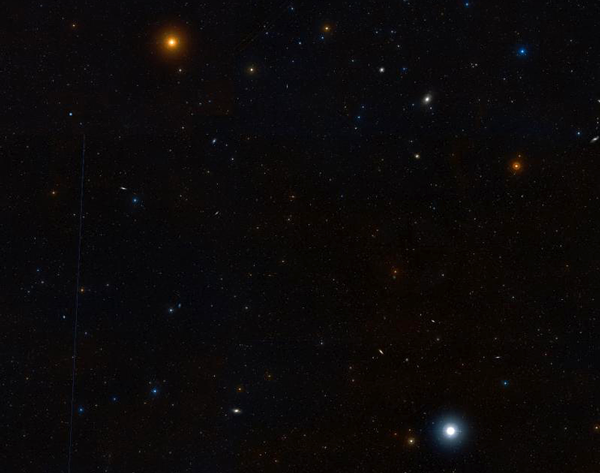
आया॒तु दे॒वस्स॑वि॒तोप॑यातु। हि॒र॒ण्यये॑न सु॒वृता॒ रथे॑न ।
वह॒न्॒ हस्त सुभगं॑ विद्म॒नाप॑सम्। प्रयच्छ॑न्तं॒ पपु॑रिं॒ पुण्य॒मच्छ॑ ।
हस्तः॒ प्रय॑च्छत्व॒मृतं॒ वसी॑यः । दक्षि॑णेन॒ प्रति॑गृभ्णीम एनत् ।
दा॒तार॑म॒द्य स॑वि॑ता वि॑देय । यो नो॒ हस्ता॑य प्रसु॒वाति॑ य॒ज्ञम् ॥११ ॥
āyātu devas savitopayātu |
hiraṇyayena suvṛtā rathena |
vahan, hastaṃ subhagaṃ vidmanāpasam |
prayacchantaṃ papuriṃ puṇyam accha |
hastaḥ prayacchatvamṛtaṃ vasīyaḥ |
dakṣiṇena pratigṛbhṇīma enat |
dātāram adya savitā videya |
yo no hastāya prasuvāti yajñam ||11 ||
“God Savitar should come, should [thus] approach [us]! With golden Chariot that running well!
With hand that works skillfully and carefully, giving directly [to us] the plenitude pure and full of merit.
[His] Hand should [thus] bestow [upon us] the greater and more opulent Immortality;
Which we shall receive as Dakṣina!
May I, [as] Savitar, come to know today the Giver, who should deliver to our hand the Sacrifice.”
The Lay of the Land
Of all the 27 nakṣatras, Hasta nakṣatra manifests a particular ability for its natives to get a handle on the many facets of life. This article will explore and exemplify some of the meaningful ways in which the nakṣatra of Hasta can enrich chart interpretation.
Each nakṣatra spans 13°20’ of ecliptic longitude. The zone of Hasta nakṣatra spans from 10° to 23°20’ in the constellation of Virgo. Hasta nakṣatra is made of up twin yoga tārās (marker stars), Delta and Gamma Virginis. They are also known as Auva and Porrima. Auva resides at ecliptic longitude of 17°37’ Virgo and an ecliptic latitude of 8°N37’. Porrima resides at ecliptic longitude of 16°18’ Virgo with a latitude of 2°N47’.
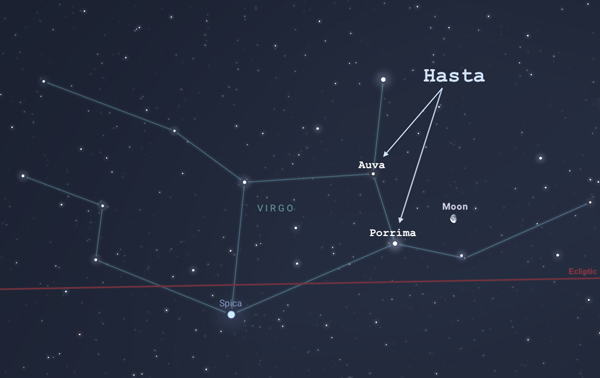
Porrima is the brighter star with a magnitude of 2.68 making it visible to the naked eye, and its twin, Auva, is dimmer at a 3.35 magnitude.
Many of the meanings attributed to natives born with a prominent placement in Hasta, and especially when this placement is within 1°30’ of one of the yoga tārās, have their roots in the meanings and symbols associated with the name of this nakṣatra, i.e., Hasta. The word hasta is a Sanskrit word and as a noun means “hand,” which is also the symbol associated with this nakṣatra; more specifically, the hand as a closed fist. The root has also gives rise to verbs that mean “to laugh, smile, and cause brightness, radiance, and joy.”
Hand in Fist
In Hasta nakṣatra, the pratimā hugely informs the themes that color the destiny of a native with important placements in this star. The hand indicates themes of dexterity, skill, and pliability, and especially those skilled with their hands, such as artisans, hand-crafters, pickpockets, mime artists, and stage magicians. In addition, those interested in hands, like palmists—and by extension, practitioners of Jyotiṣa—can be the kinds of people associated with this nakṣatra.

CC BY 4.0, via Wikimedia Commons
Furthermore, it can also be more specifically a closed fist, giving Hasta natives powerful determination and the ability to “grab hold of” or get a handle on certain aspects of life, whether it be material, spiritual, mental, emotional, or physical. Depending on the chart, one or many of these aspects may be activated.
Here Comes the Sun
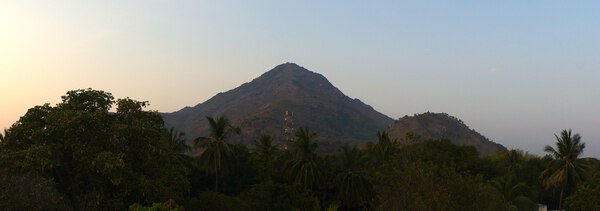
Each nakṣatra has a deity from the Vedic pantheon associated with it. For Hasta, this deity is Savitṛ, who is the Sun, the central star of our solar system. The Sun before sunrise is called Savitṛ, and after sunrise until sunset is called Sūrya. [1]
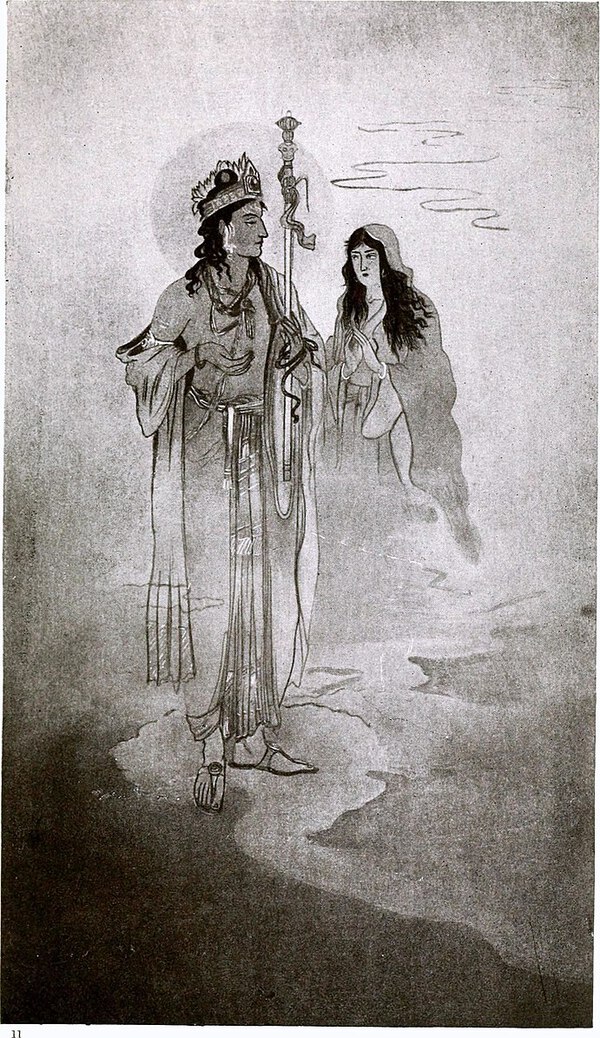
Savitṛ is found in many myths and stories, and one that stands out, as it pertains to the life themes of Hasta natives, is one about a king who was a devotee of Savitṛ. This story is found in the Indian epic, the Mahābhārata, and centers around the king’s daughter, a princess named Sāvitrī. In the story, the princess’s husband dies suddenly, and Yama, the god of death, arrives to claim him. As he takes the essence of her husband away, she follows Yama to the end of the Earth, and through her wit and determination, is able to convince Yama to give back her husband’s life. A beautiful rendition of this story is written by Aaron Shepard and can be found on his website. [2]
This story and its central themes of will, determination, and bravery speak so strongly to the natives with prominent Hasta placements—themes such as extreme devotion to a cause, career, and/or life’s work.
In the Vedic tradition, one of the most revered mantras is the Gāyatrī Mantra, which is from the Ṛg Veda (3.62.10). The Gāyatrī Mantra invokes Savitṛ, making him a central deity in the Vedic pantheon. Many qualities and themes of the Sun can show up for Hasta natives. Some examples of such themes are radiance and brilliance, which can manifest as an illumined intelligence and can lend itself to careers in counselling, advising, and supporting others.
The Sun shines on all without discrimination, which can give Hasta natives incredible generosity and magnanimity. The Sun is also reliable and repetitive in the way it rises and sets each day, and this quality of reliable repetition often translates into a Hasta native’s life through the mastery of a certain skill. All skills require discipline, practice, and repetition to master. However, not all people become masterful at something. The Hasta native will often have the ability to become masterful at some specific skill, but whether this potential is manifested in the life depends upon the strength of the natal chart and confluent supportive combinations.
Irresistible Fun

Another strong Hasta theme has to do with jesting, merriment, laughter, and, under some circumstances, ridicule. These themes can be seen in a couple of ways. As described above, the dhātu (verbal root) has means “to laugh.” Hasta natives love to have fun and can have an almost childlike innocence and joy. It often shows in their facial features, which can resemble a cherub with pinchable cheeks and a rolled chin. The deity, Sūrya, who brings brightness and light to all, makes them sunny and charismatic
The gold standard for learning how a prominent placement on or very near a yoga tārā within a given nakṣatra will manifest in a native’s life is to look at examples in real life. One such native for Hasta nakṣatra is Tony Robbins, American author, coach, motivational speaker, and philanthropist.
My Personal Encounter with Hasta
Before I wrote this article, I was tasked to find natives who had a prominent placement on or near the yoga tārās of Hasta. This is no easy task. Because of the 360 degrees within a horoscope, I needed to find key grahas and/or the Ascendant within 1°30’ of a certain point. I had looked through many charts and had yet to come up with anything. As I was about to call a friend for help, I was struck with an idea out of the blue that I should look up the chart of Tony Robbins to see if he might have this kind of placement.
Tony Robbins February 29, 1960 20:10 Los Angeles, CA USA[3]
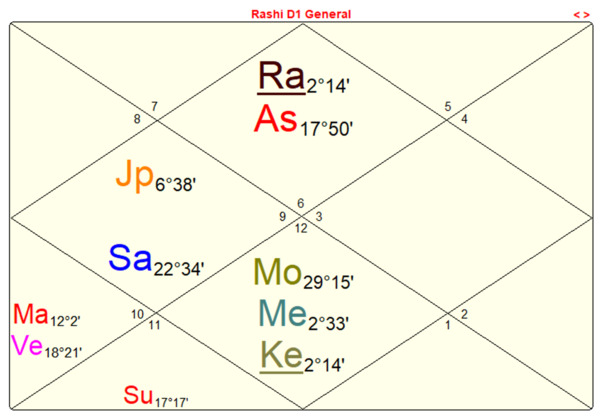
Upon searching for his chart, not only did Tony Robbins have Hasta as his rising nakṣatra, it was smack dab on the yoga tārā. I went on to check out Robbins’ website for more information and saw that he was just then offering an online streaming intensive called New World New You Challenge—Take Control of Your Future. I figured I would sign up as part of my research for this article. Within the first 10 minutes, I was captivated. Tony Robbins’ seminars are grounded in changing your state to transform your life. I was jumping around, dancing, and shouting at the top of my lungs, while at the same time examining the stories and words I use to define myself. It was quite an experience.
As we examine Tony Robbins’ chart, we will see that Mars, lord of the eighth bhāva of transformation and significator for powerful speech, is sitting with the significator for advice, Venus, all in the fifth bhāva of advice and counsel. I experienced first-hand the impact he has had on so many through the transformational power of his speech and wise counsel.
Activation of Hasta
The Ascendant point in a Vedic horoscope is the rising degree position on the eastern horizon at the time and place of birth. Placements of importance to watch that will bring forward themes of a given nakṣatra are the Ascendant degree, Ascendant Lord, Moon, Sun, daśā lord,[4] and occurence of multiple planets residing within the range of a given nakṣatra. As mentioned previously, when an important placement happens within 1°30’ of one of the yoga tārās, then the themes of that nakṣatra can come forward in a profound and impactful way.
Tony Robbins is a Virgo rising with the star of Hasta rising. Particularly notable is the rising degree of 17°50’—just 14 minutes of arc away from Delta Virginis or Auva at ecliptic longitude 17°36’ Virgo. This creates a very strong activation of the Hasta themes in his life, and upon a closer look, it is clear that many of those themes have expressed themselves in powerful ways.
Skill in Action
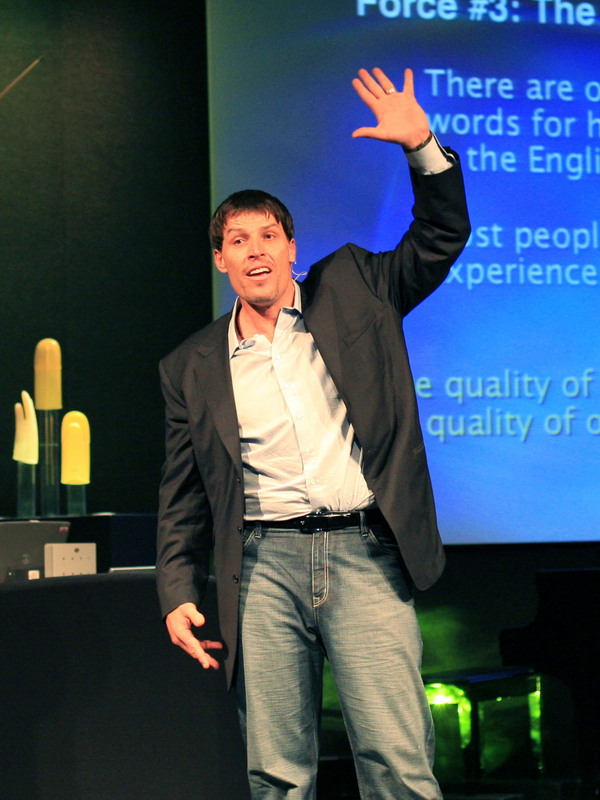
The symbolic themes of the hand and its ability to grab hold of a myriad of things can show up as major life themes for Hasta natives. These can manifest in the realms of the material, spiritual, mental, emotional, and physical. Tony Robbins is a clear example of this manifestation ability, especially around the ability to ‘grab hold of’ something. He talks about how regardless of how he is feeling, if there is an opportunity, he will constantly find a way to reach out and ‘grab it.’
Hasta natives often have a strong sense of purpose and have the skillful means and expertise to execute that purpose. Remember Sāvitrī’s profound sense of purpose as she tirelessly followed Yama to the ends of the earth until she won back her husband through her single-minded determination and her clever, quick-witted speech.
Tony Robbins has often been referred to as a “force of nature.” His fiery displays of enthusiasm, positive-thinking, and seemingly endless energy are a testament to that force and ground his core message. Speaking to this, Tony Robbins was quoted saying, “There is a powerful driving force inside every human being that, once unleashed, can make any vision, dream, or desire a reality.”[5] He is deeply passionate about helping as many people find breakthroughs in their lives as he possibly can, and has done this most notably through his work as a peak performance coach and seminar leader.
His mastery and expertise as a coach has attracted the likes of U.S. presidents, rock and roll stars, like Aerosmith, and world champion athletes, like Serena Williams and NBA’s world champion Golden State Warriors. Business titans, such as Salesforce.com founder, Marc Benioff and billionaire, Ray Dalio, have both engaged him for personal coaching.
Jupiter is a key graha in his chart supporting his skill in action. It forms one of the five Pañca Mahāpuruṣa Yogas (five combinations of a great being[6]). These yogas are formed when Mars, Mercury, Jupiter, Venus, and Saturn occupy their own or exaltation constellation while in a kendra (bhāvas 1, 4, 7, or 10). It is even more powerful when it is also in a kendra relationship to the Moon, which it is in this chart. In the case of Jupiter, the Mahāpuruṣa Yoga is a Hamsa Yoga. That same Jupiter boosts the ability of his Ascendant lord, Mercury, to utilize the gifts in this chart. It forms a Parvata Yoga,[7] which is formed when the dispositor of the lagna lord is svarāśi (in its own constellation) or exalted while in a kendra or trikona. It gives that same borrowed strength to the Moon as the Moon, too, is in a Jupiter rāśi. This powerful Jupiter is aspecting the tenth house of career, strongly contributing to the level of mastery he brings to his work.
Lighting Up the Room
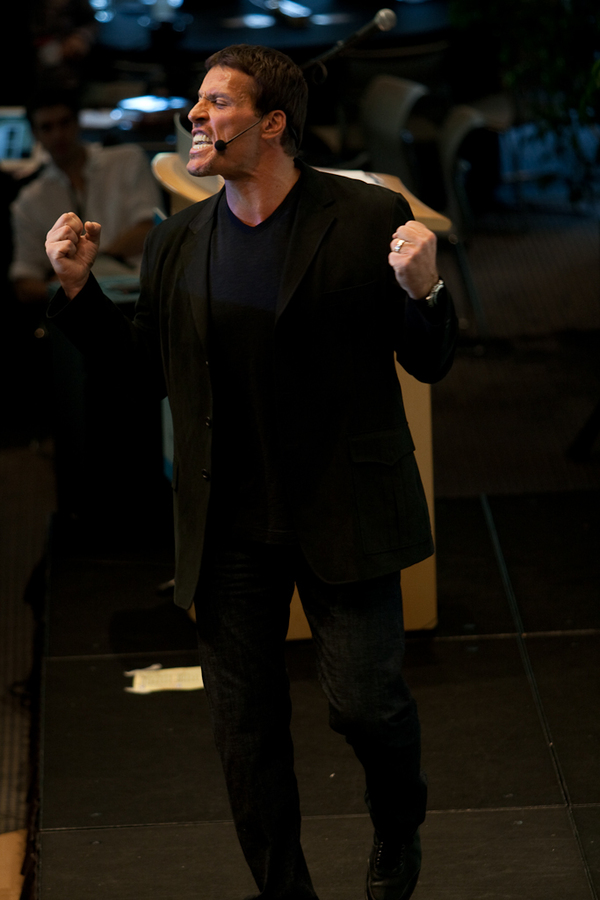
Hasta natives love to play and have fun and are skilled at inviting others to do so. Tony's seminars are incredibly upbeat and engaging, often involving tens of thousands of people, during which he gets participants into a peak state by having them jump, dance, move, and use their voices. He teaches people to change their state by working strongly with physiology, focus, and language. His events take place in a very joyous and playful atmosphere which connects to the Hasta themes of merriment and joy.
Events have extravagant light shows and loud, upbeat music that he brilliantly orchestrates with his voice. When people are up and dancing, he will participate along with a signature clap that goes with the music, and the audience is often participating along with him. Here we begin to see the literal theme of the hand show up strongly in his life. In the photo, we see him making the Hasta fist, the symbol of this nakṣatra, as he works with people at a seminar. We see clear support with third lord Mars, who is ruling communication, with hands becoming extremely powerful through exaltation in the fifth.
Once again, Jupiter becomes pivotal as the Hamsa Yoga can show up in natives through the attribute of a powerful voice. And, the two grahas in Jyotiṣa that signal humor and playfulness are Jupiter and Mercury—here, both are in kendras with Jupiter strongly affecting the career bhāva and Mercury, the lagna lord, aspecting back to the lagna. Though Mercury is in its debilitation rāśi, in addition to the Parvata Yoga mentioned above, there are several powerful modifications of the debilitation resulting in a Nīca Bhaṅga Rāja Yoga.[8]

Hasta natives can often have a very youthful appearance with a strong physical manifestation of the cheeks, chin, and nose. Furthermore, they will often have a cherub-like or waif-like face. We see this strong expression in Tony Robbins with his prominent cheek bones and chin, and beaming youthful smile.
Upon Whom Fortune Shines

Hasta natives also have a strong association with good fortune and rise, sometimes called a ‘Cinderella rise.’ The Hasta native, with Sūrya as the deity, has a well-lit life and often a dose of surprisingly good luck. They are particularly skillful at connecting this theme with the material realm. This could not be more true for Mr. Robbins who went from being a janitor to writing six international best sellers, having more than 4 million people attend his seminars, and a net worth is $500M. He is the chair of a holding company that is comprised of 70 companies with sales of $6B. We see huge support for wealth in his chart through multiple planetary combinations for wealth known as Dhana Yogas, particularly the one formed between the Moon (the eleventh lord of gains and big commercial enterprises) and Mercury (the tenth lord of career and the lagna lord of self-effort and the ability to manifest and utilize the promised gifts in the chart).
A vehicle for rise can be through the power of the Hasta native’s voice, and it might even be a magical voice. Recall the story of princess Sāvitrī, where her wit and determination won back her husband. Triumphing over Lord Yama through the power of her speech was, indeed, magical. When listening to Tony Robbins, I, among many, notice the dazzling power and distinction of his voice, his primary tool in his work with people. In addition, the voice is one of the main ways in which he teaches people to create a change in their state.
How is this supported in the chart? Wit is a quality of a sharp intellect and an ability to communicate. Lagna lord Mercury is the significator for communication, intellect, and wit and aspects back to its own lagna, but it is the additional confluence of exalted Mars in the fifth bhāva of the intellect with the second lord of speech, Venus, that seals the deal. Mars gives a razor-sharp and quick mind, imbuing the speech with those qualities. The fifth bhāva is also a place for having a facility with deep cognitive abilities and knowledge of mantras. The deity Sūrya links directly to the Gāyatrī Mantra, a most powerful and sacred Vedic mantra implying transformative magic.
Much of Tony Robbins’ work has focused on using one’s mind as the greatest asset. He says, “The power of positive thinking is the ability to generate a feeling of certainty in yourself when nothing in the environment supports you.”[9] The planets that rule the mental and emotional mind are Moon and Mercury. For Tony Robbins, these planets are together in his seventh house aspecting the first, which will make their themes very prominent and part of his work in the world. Many of his teaching themes work closely with the mental and emotional aspects of humanity. A poignant example of one of these themes is that the quality of our lives is in direct proportion to the amount of uncertainty we can live with. If you have to be certain about everything, you can’t do anything. If you can face uncertainty, you have freedom.[10]
The Consummate Actor
A Dazzling Ascendant
Kate Winslet October 5, 1975 7:15 Reading, UK[11]
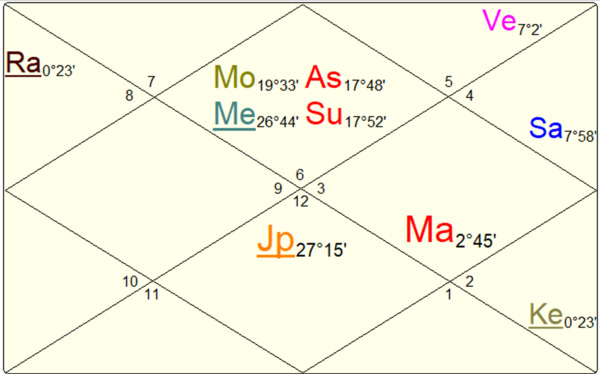
A brilliant example of the qualities of Hasta expressed in a life is that of Kate Winslet, born October 5th, 1975 at 7:15 a.m. in Reading, England. At this precise moment, the Ascendant was 17°48’ Virgo, which puts Hasta rising within only 12 minutes of arc from the yoga tārā of Auva, which resides at ecliptic longitude of 17°36’ Virgo. Not only is Winslet’s Ascendant activating this powerful point, but the Sun is also sitting at 17°52’ Virgo, only 16 minutes from Auva, which resides at ecliptic longitude of 17°36’ Virgo. And to top it off, her Moon is at 19°33’ Virgo, also placing it in Hasta! Three of the most central and important reference points for interpreting a chart, i.e., Ascendant, Sun, and Moon, are all in the Ascendent, which is rare and powerful confluence for any auspicious combinations present in the chart. That the grahas are also all in Hasta, gives Kate Winslet an uber-powerful expression of this nakṣatra.

As stated previously, Hasta natives will often have a certain skill which can develop into mastery. For Kate Winslet, her Hasta mastery has expressed itself through a lifelong career as an actor that has garnered a significant volume of accolades and prestigious awards. Known for roles in period dramas and dynamic female leads, Kate Winslet is arguably one of the most significant female actors of our time. She has starred in some of the most iconic films from Titanic to Eternal Sunshine of the Spotless Mind and Sense and Sensibility. Her command of character, innate elegance, and passion for excellence moved Leonardo DiCaprio, who starred with her in Titanic and Revolutionary Road to say that she was, “the most prepared and well-researched actor on set.”[12]
Achieving this level of mastery is possible in a chart where there is the ability to utilize the gifts given in the destiny pattern. The ability to utilize is an important function of the lagna and especially the lagna lord. When a lagna lord is not only strong but dignified by being either in its own rāśi or exalted, it speaks to a more refined expression of that skill and makes it possible for auspicious combinations in the chart to bear fruit in a lifetime.
With Winslet, we see that her lagna lord, Mercury, is in its exaltation constellation of Virgo in the Ascendant creating one of the five Pañca Mahāpuruṣa Yogas, called a Bhadra Yoga, which means “auspicious.” It is also powerful by being retrograde and having directional strength (dig bala). When the Sun and Mercury are together in this configuration, they also create a yoga known as a Budhāditya Yoga that contributes strongly to brilliance and intelligence. Furthermore, a very powerful Jupiter[13] is aspecting the lagna and lagna lord while Jupiter, itself, is creating a Hamsa Yoga, a yoga also seen in the chart of Tony Robbins. There are other very auspicious yogas created by other permutations of the grahas across the 1/7 axis.
Beautiful Cherub

Like Tony Robbins, Kate Winslet expresses the facial features that can be found in Hasta natives, and with her, we see it leaning to the cherub side with the prominent cheek bones and wider-set face. We know already that the ruling deity, Savitṛ, also known as the Sun, can give Hasta natives a quality of shining and radiance. Winslet manifests this potential all the more powerfully because the Sun sits in her chart in her first bhāva and would have risen just shortly after she was born.
True Cinderella Rise
Winslet was from a loving but poor family. Her father was a struggling actor and her mom was a nanny and waitress. They had to have their meals provided by a charity that helped such actors. She was also overweight and bullied.[14] Yet, acting was in her blood, and she participated in theater from a very young age. And true to her utilization ability, even her weight, which held her back from other roles, got her cast as the daughter of an obese woman (she was 185 pounds at the time). The director opined that she was perfect for the part because of the likeness between mother and daughter. But the net effect was she decided then and there to shed the weight.[15] Success followed shortly thereafter, when she beat out 175 other girls for a part in the psychodrama, Heavenly Creatures, impressing director Peter Jackson with her intensity. It took off from there with a made-to-order role in Shakespeare’s Sense and Sensibility written by and starring Emma Thompson and directed by Ang Lee. She garnered a SAG award as well as Oscar and Golden Globe nominations for her performance.

But it took persistence, intensity, and total confidence to land her major breakout role. She cornered James Cameron, who was looking elsewhere for the role of Rose in Titanic and pleaded with him, saying: “You don't understand! I am Rose! I don't know why you’re even seeing anyone else!”[16] She proved to be irresistible, and the film went on to be one of the highest grossing films of all time, launching her career and life in a way that she could never have imagined.
This extraordinary rise is seen in a number of ways but all anchored by a very significant daśā sequence—the back-to-back daśās of Rāhu and Jupiter.[17] It happens in Winslet’s chart that Rāhu will act like two significant grahas, Mars and Jupiter. Of the two, Jupiter will dominate, because it is much stronger, and also Rāhu acts like it in two ways—it is the rāśi dispositor and aspects Rāhu. On its own, Rāhu is significant in the third bhāva of skills, including the classical arts. The lord of the third, Mars goes to the tenth, where it has dig bala and often those skills indicated by the third inform the career. However, it is the extraordinary Jupiter in relationship with the singular lagna lord, Mercury, and the Moon and its bevy of yogas that fueled her inevitable rise to the zenith where she has remained through her entire career. An extraordinary rare chart. An extraordinary rare life.
Hasta, just like every other nakṣatra, brings about very unique and special qualities that were cognized thousands of years ago by the mysterious seers of yore. Examining prominent nakṣatra placements in a chart can reveal useful knowledge of likely proclivities of a person. But what seems most pertinent is the invitation that is being offered through the embodiment of this knowledge to deeply explore and examine our humanity, that we might live a more harmonious and prosperous life with nature. As much as the themes of Hasta speak to ‘grabbing hold of one’s life’ and ‘getting a handle,’ it ought to be done in accordance with nature; that is, to live with her and align with her, so that she may align and live happily with you.

Author: Lucas Schroeder

Lucas Schroeder is a practitioner in the Western Baul Tradition apprenticing under his teacher Lalitha whom he met in his early twenties. He has been a dedicated student of Jyotiṣa since 2016, first studying with Margaret Mahan and later continuing on with Penny Farrow. His unique life experience spans from ashram-living and solo retreat practice to working with successful tech start-ups in software, AI, and machine learning. Lucas is a devotee on the path who practices Jyotiṣa in attempt to live harmoniously with nature.
Endnotes:
[1] Monier-Williams, Sir M. 1899. A Sanskrit-English Dictionary. Springfield, VA: Nataraj Books: 1190.
[2] Shepard, Aaron. n.d. The Princess and the God: A Tale of Ancient India (retold by Aaron Shepard). Accessed May 26, 21. http://www.aaronshep.com/stories/006.html.
[3] n.d. "astrodatabank." astro.com. Accessed April 21, 2021. https://www.astro.com/adb-search.
4 Clifford, Catherine. 2017. This is the No. 1 Question Tony Robbins Gets Asked (and How He Answers It). December 1. Accessed May 21. https://www.cnbc.com/2017/12/01/how-tony-robbins-deals-with-tough-times.html.
[5] tonyrobbins.com. n.d. Read These Tony Robbins Quotes to Prime You for Success. Accessed May 21. https://www.tonyrobbins.com/tony-robbins-quotes.
[6] The Pañcamahāpuruṣa yogas (set of five yogas) are formed when a tāra graha (one of the five true planets) is in its svarāśi or exalted in a kendra or trikona. Phaladīpikā 6.1
[7] Kapoor, Dr. G.S., translation/commentary/annotation. 2020. Phaladīpikā . New Delhi: Ranjan Publications:6.36.
[8] ibid.7.26-30
[9] tonyrobbins.com. n.d. Read These Tony Robbins Quotes to Prime You for Success. Accessed May 21. https://www.tonyrobbins.com/tony-robbins-quotes.
[10] Robbins, Tony. 2021. "New World New You Challenge—Take Control of Your Future." https://make2021myyear.com/nwny-vip.
[11] n.d. "astrodatabank." astro.com. Accessed April 21, 2021. https://www.astro.com/adb-search.
[12] The Wikimedia Foundation. n.d. Kate Winslet. Accessed May 2021. https://en.wikipedia.org/wiki/Kate_Winslet.
[13] Jupiter is retrograde, svarāśi, and vargottama.
[14] 2013. 'Labor Day' Star Kate Winslet on Defying Expectations, Onscreen and Off (Q & A). November 11. Accessed May 2021. https://www.hollywoodreporter.com/news/general-news/labor-day-star-kate-winslet-653268/.
[15] Lipsky, David. 1998. The Unsinkable Kate Winslet. March 5. Accessed May 2021. https://www.rollingstone.com/movies/movie-news/the-unsinkable-kate-winslet-108777/.
[16] Entertainment Weekly. 1997. "Titanic." November 7: 1-7. http://www.ew.com/ew/article/0,,290182,00.html
[17] Farrow, Penny. 2018. “Timing is Everything.” The Mountain Astrologer, April/May:14.
Works Cited:
Clifford, Catherine. 2017. This is the No. 1 Question Tony Robbins Gets Asked (and How He Answers It). December 1. Accessed May 21. https://www.cnbc.com/2017/12/01/how-tony-robbins-deals-with-tough-times.html.
de Fouw, Hart and Robert Svoboda. 1996. Light on Life. Twin Lakes, WI: Lotus press.
Entertainment Weekly. 1997. "Titanic." November 7: 1-7. http://www.ew.com/ew/article/0,,290182,00.html.
Kapoor, Dr. G.S., translation/commentary/annotation. 2020. Phaladīpikā . New Delhi: Ranjan Publications.
2013. 'Labor Day' Star Kate Winslet on Defying Expectations, Onscreen and Off (Q & A). November 11. Accessed May 2021. https://www.hollywoodreporter.com/news/general-news/labor-day-star-kate-winslet-653268/.
Lipsky, David. 1998. The Unsinkable Kate Winslet. March 5. Accessed May 2021. https://www.rollingstone.com/movies/movie-news/the-unsinkable-kate-winslet-108777/.
Monier-Williams, Sir M. 1899. A Sanskrit-English Dictionary. Springfield,V A: Nataraj Books.
Robbins, Tony. 2021. "New World New You Challenge—Take Control of Your Future." https://make2021myyear.com/nwny-vip.
R. Santhhanam, translator/commentary/editing. 2018. Bṛhat Pārāśara Horā Śāstra . New Delhi: Ranjan Publications.
Shepard, Aaron. n.d. The Princess and the God: A Tale of Ancient India (retold by Aaron Shepard). Accessed May 26, 21. http://www.aaronshep.com/stories/006.html.
The Wikimedia Foundation. n.d. Kate Winslet. Accessed May 2021. https://en.wikipedia.org/wiki/Kate_Winslet.
tonyrobbins.com. n.d. Read These Tony Robbins Quotes to Prime You for Success. Accessed May 21. https://www.tonyrobbins.com/tony-robbins-quotes.

